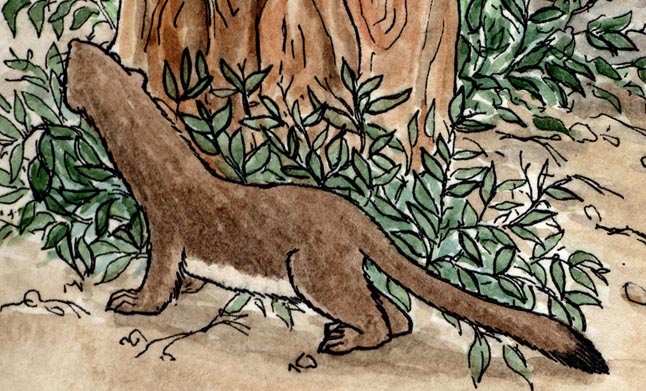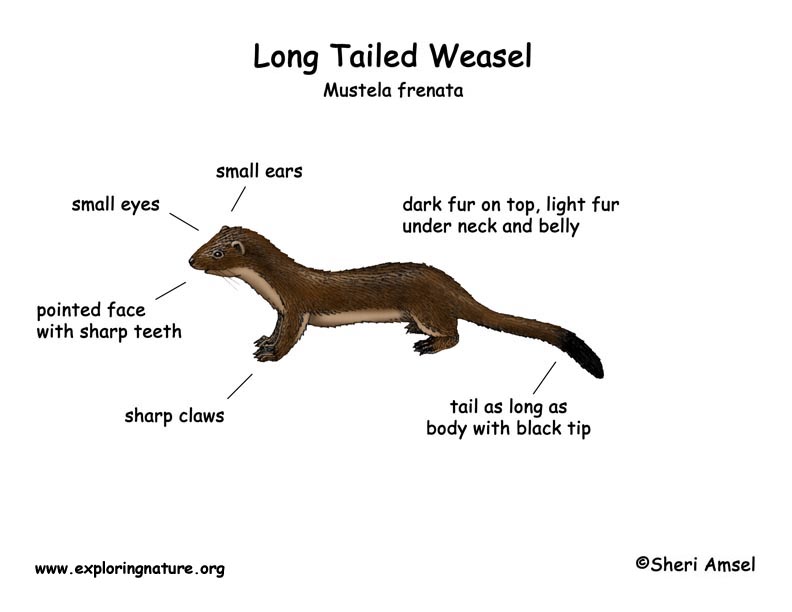

The long-tailed weasel lives throughout southern Canada, most of North America down to northern South America.
They are found in open woodlands, fields, and even developed areas. They live in burrows or hollowed out areas in rocks piles, fallen trees or under buildings.
Long-tail weasels have a long, skinny body, with a long, bushy tail that is as long as their body. Males can reach more than 2 feet, including their tail. Females are smaller. They weigh on average about 5 ounces but can reach as much as a pound. They are brown on top with white underneath. Long-tailed weasels that live in the northern part of its range, where it snows, will turn white in the winter.
They are active and alert, good swimmer and climbers. They are territorial and will attack trespassers. They are active mostly at night (nocturnal), they can be out at any time during the day.
They are fierce hunters feeding mostly on small rodents but also taking rabbits, birds, reptiles and even fruit in summer (carnivores). They kill their prey by biting down hard on the base of the skull.
Predators include foxes, coyotes, badgers, falcons and hawks.
Long-tailed weasels live alone except to mate. Though it can be more than 9 months between the time they mate and the female has her 6 young, weasels are not truly pregnant until March and they have the young about 6 weeks later. This is called delayed implantation and many wild mammals have this same adaptation. It allows the animals to mate in the fall when they are more active, than try to find each other in late winter. The young are born in late April to early May. Within 2 months they can kill their own prey.
If a long-tailed weasel survives to become an adult, they may live for several years. They are listed as Lower Risk - least concern.
Kingdom: Animalia
Phylum: Chordata
Subphylum: Vertebrata
Class: Mammalia
Order: Carnivora
Suborder: Caniformia
Family: Mustelidae
Subfamily: Mustelinae
Genus: Mustela
Species: Mustela frenata
When you research information you must cite the reference. Citing for websites is different from citing from books, magazines and periodicals. The style of citing shown here is from the MLA Style Citations (Modern Language Association).
When citing a WEBSITE the general format is as follows.
Author Last Name, First Name(s). "Title: Subtitle of Part of Web Page, if appropriate." Title: Subtitle: Section of Page if appropriate. Sponsoring/Publishing Agency, If Given. Additional significant descriptive information. Date of Electronic Publication or other Date, such as Last Updated. Day Month Year of access < URL >.
Amsel, Sheri. "Weasel (Long-tailed)" Exploring Nature Educational Resource ©2005-2024. December 15, 2024
< http://www.exploringnature.org/db/view/372 >

